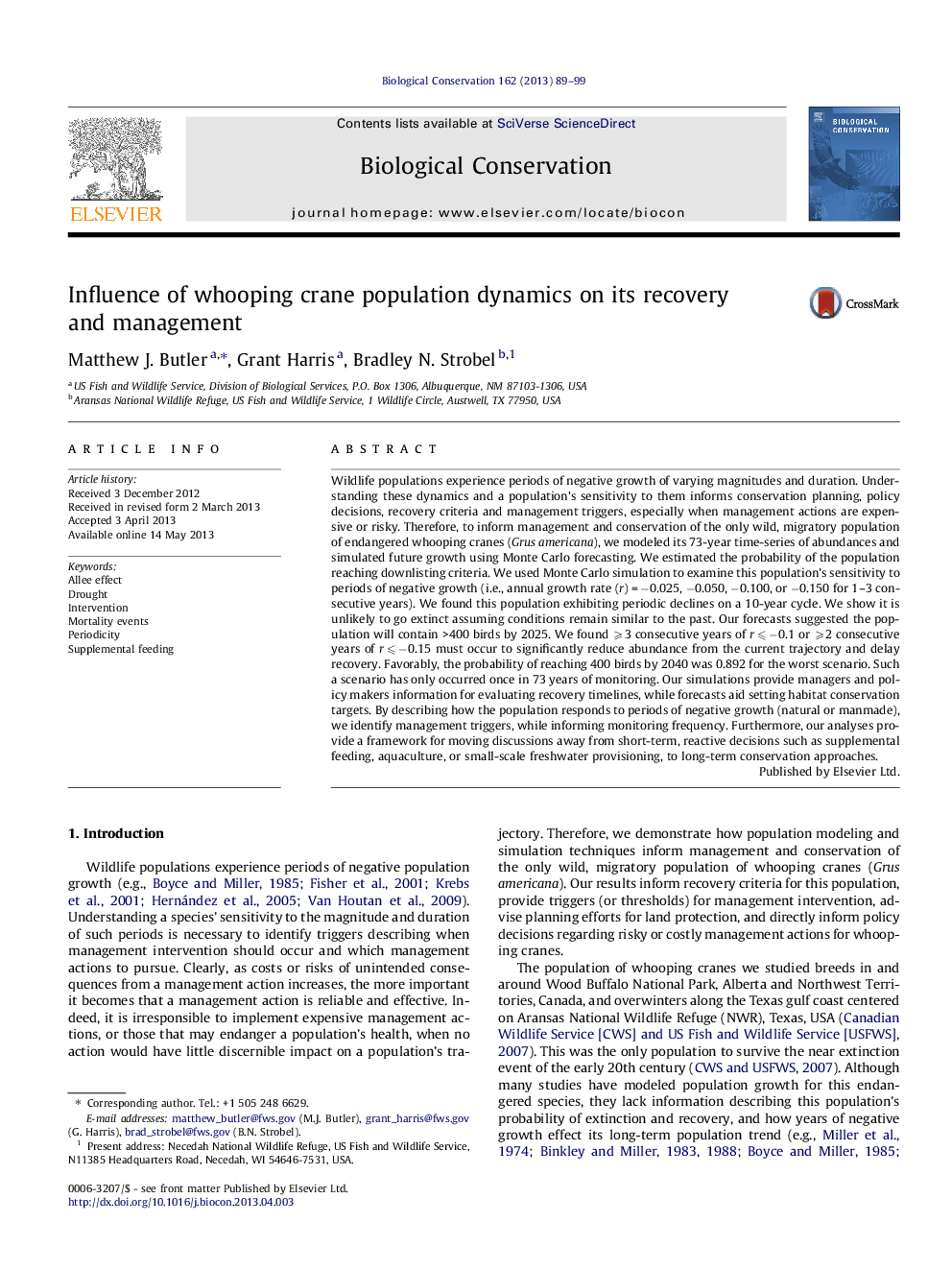| کد مقاله | کد نشریه | سال انتشار | مقاله انگلیسی | نسخه تمام متن |
|---|---|---|---|---|
| 6300518 | 1617939 | 2013 | 11 صفحه PDF | دانلود رایگان |
عنوان انگلیسی مقاله ISI
Influence of whooping crane population dynamics on its recovery and management
ترجمه فارسی عنوان
تأثیر دینامیک جمعیت جرثقیل دودکش بر بهبود و مدیریت آن
دانلود مقاله + سفارش ترجمه
دانلود مقاله ISI انگلیسی
رایگان برای ایرانیان
کلمات کلیدی
اثر آللی، خشکی، مداخله، حوادث مرگ و میر، دوره ای تغذیه تکمیلی،
موضوعات مرتبط
علوم زیستی و بیوفناوری
علوم کشاورزی و بیولوژیک
بوم شناسی، تکامل، رفتار و سامانه شناسی
چکیده انگلیسی
Wildlife populations experience periods of negative growth of varying magnitudes and duration. Understanding these dynamics and a population's sensitivity to them informs conservation planning, policy decisions, recovery criteria and management triggers, especially when management actions are expensive or risky. Therefore, to inform management and conservation of the only wild, migratory population of endangered whooping cranes (Grus americana), we modeled its 73-year time-series of abundances and simulated future growth using Monte Carlo forecasting. We estimated the probability of the population reaching downlisting criteria. We used Monte Carlo simulation to examine this population's sensitivity to periods of negative growth (i.e., annual growth rate (r) = â0.025, â0.050, â0.100, or â0.150 for 1-3 consecutive years). We found this population exhibiting periodic declines on a 10-year cycle. We show it is unlikely to go extinct assuming conditions remain similar to the past. Our forecasts suggested the population will contain >400 birds by 2025. We found ⩾3 consecutive years of r ⩽ â0.1 or ⩾2 consecutive years of r ⩽ â0.15 must occur to significantly reduce abundance from the current trajectory and delay recovery. Favorably, the probability of reaching 400 birds by 2040 was 0.892 for the worst scenario. Such a scenario has only occurred once in 73 years of monitoring. Our simulations provide managers and policy makers information for evaluating recovery timelines, while forecasts aid setting habitat conservation targets. By describing how the population responds to periods of negative growth (natural or manmade), we identify management triggers, while informing monitoring frequency. Furthermore, our analyses provide a framework for moving discussions away from short-term, reactive decisions such as supplemental feeding, aquaculture, or small-scale freshwater provisioning, to long-term conservation approaches.
ناشر
Database: Elsevier - ScienceDirect (ساینس دایرکت)
Journal: Biological Conservation - Volume 162, June 2013, Pages 89-99
Journal: Biological Conservation - Volume 162, June 2013, Pages 89-99
نویسندگان
Matthew J. Butler, Grant Harris, Bradley N. Strobel,
